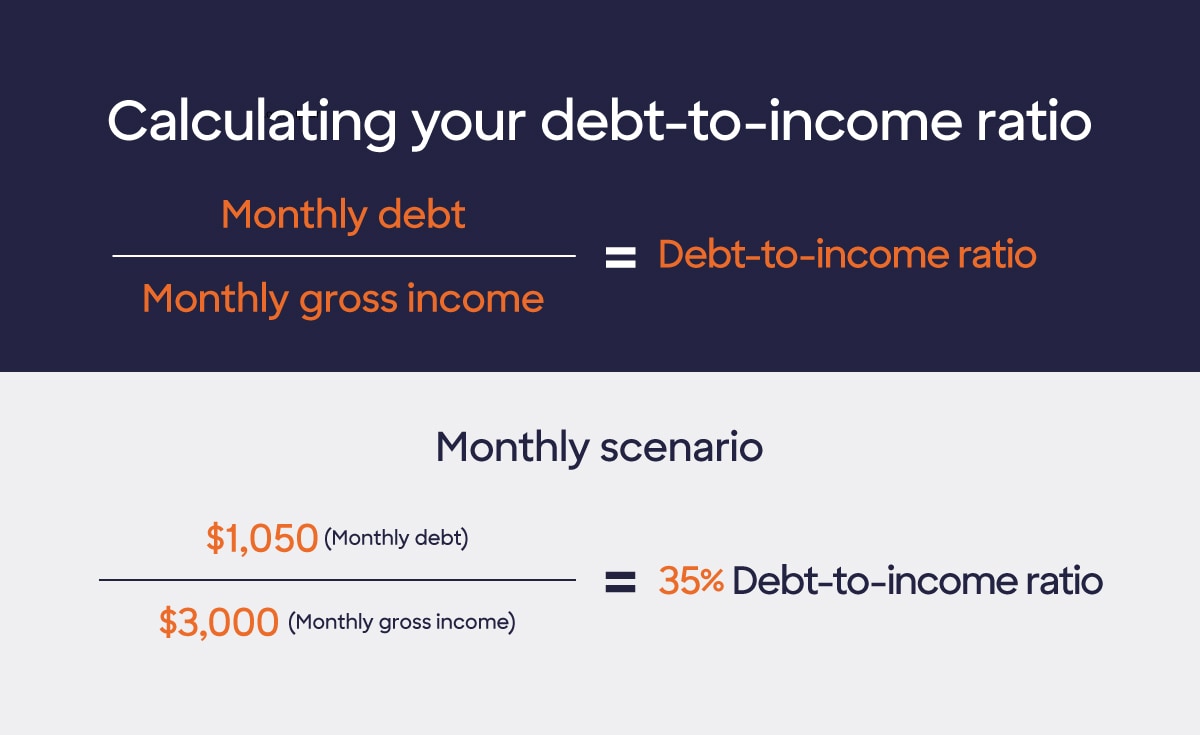Jun 19, 2025

Your debt-to-income ratio (DTI) is an important indicator of your financial health. It calculates how much of your monthly income goes toward paying current debt (this includes mortgage or rent payments).
Jun 19, 2025
Your debt-to-income ratio (DTI) is an important indicator of your financial health. It calculates how much of your monthly income goes toward paying current debt (this includes mortgage or rent payments).
Lenders may use your DTI to determine their risk in lending to you. In other words, your debt-to-income ratio is a measure of your creditworthiness.
The more you need to spend each month to pay off your existing debt, the less confident lenders will be in your ability to keep up with the payments on any new debt. The less debt you have compared to your income, the more likely it is that lenders will trust you to safely manage new debt.
Your DTI ratio compares your monthly bill payments to your gross monthly income. It accounts for all monthly recurring debt and expenses. This could include housing costs, credit cards, and other loans.
To estimate your DTI, you can use an online debt-to-income calculator or pencil and paper.
First, gather your bills. You should include any of the following payments:
Then, figure out your monthly gross household income from employment and any other sources of income, such as self-employment. Your gross income would be your total earnings before taxes and deductions. For your household, it would include the gross income of all earners.
Your DTI is the total amount of all these monthly expenses divided by your gross income. (You don’t need to include your discretionary spending or things that fluctuate such as your gas or grocery bills.)

To figure out debt- to-income ratio, divide your monthly debt expenses by your gross monthly income.
For example, if your total monthly debt payments come to $1,050 and your gross monthly income is $3,000, your DTI would be 35%.
Your DTI is important because it gives an immediate snapshot of your financial situation. If your DTI is too high, you might struggle to cover your daily expenses, or save for important financial goals.
Your DTI can make the difference between loan approval and rejection. It’s a strong indicator of whether you can afford to add new payments to your monthly budget. A high DTI could make it more difficult to qualify for a mortgage, car loan, or other kind of loan.
To lower your DTI it is important to reduce your debt. Paying down credit cards or other loans may help you reduce your monthly payments and help set you up for a rewarding future.
You could start by consolidating higher-interest debt from credit cards into a fixed-rate, fixed-term personal loan. This may help you pay off your debt faster and save money on interest.
Your want your DTI to be as low as possible because that indicates that your income is well above what you need for recurring expenses.
If you’re applying for a loan, lenders typically want to see a DTI of less than 36%. They might allow a higher DTI if you also have good credit or other compensating factors, like a savings account large enough to cover several months of living expenses.
As lenders review your loan application, it’s important to understand what they’re looking for.
According to NerdWallet,1 if your DTI is:
To change your DTI, you'll need to reduce your debt payments, increase your income, or do both.
If you find that your DTI is too high to qualify for the loan you want, look at what you spend and what you owe. Where can you budget and save? Are your adult kids still on your cell phone bill? Do you have a streaming service or gym membership you’re not using? Can you make your coffee at home? You’d be surprised by how impactful making small tweaks to your spending habits can be.
If you have higher-interest debt, you could save money by consolidating those bills into a fixed-rate personal loan with one set regular monthly payment. If you get a personal loan at a lower interest rate than you had been paying, you will reduce your overall debt load and lower your DTI.
Credit cards are a convenient way to pay for daily expenses. They can also help you build credit. But the average APR for credit cards was 28.7% in March 2025.2 So if you find yourself struggling to keep up with your payments, it may be time to rethink how you manage this type of debt.
It’s never a bad idea to reduce higher-interest debt. Paying your credit cards off monthly is a great way to keep revolving debt low. If that’s not possible, try to pay a more than the minimum each month. If your higher-interest debt becomes unmanageable, consider a personal loan for debt consolidation.
Be sure to compare interest rates, repayment terms, and the monthly payment amount to determine the best debt consolidation tool for your financial situation..
With a Discover® personal loan you can design your loan around you. Pick the amount you need and the repayment term you want to fit your budget. For example, if you get approved for a $15,000 loan at 13.99% APR for a term of 72 months, you’ll pay just $309 per month.
Now imagine that same amount in credit card debt. With a 20% APR and a minimum payment of 3% of the balance per month, it would take more than 25 years to repay the balance owed, including accrued interest of about $18,361.3
With a personal loan, even if interest rates fluctuate, your loan will be locked at a fixed rate that won’t increase. That could help you stick to your budget and lower your debt-to-income ratio.
Looking for more ways to improve your credit health? Start by making a financial plan.
Articles may contain information from third parties. The inclusion of such information does not imply an affiliation with the bank or bank sponsorship, endorsement, or verification regarding the third party or information.